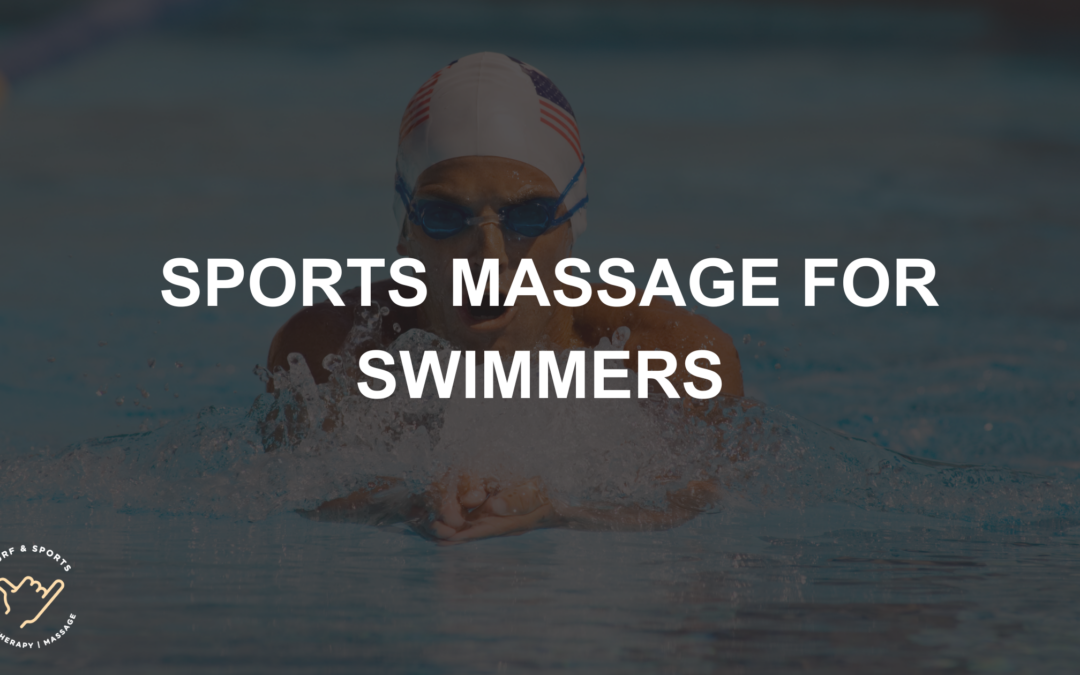Massage plays a crucial role in improving performance and optimizing swim training for swimmers. It offers several benefits, including enhancing muscle tone, promoting relaxation, improving circulation, and preventing injuries. By incorporating effective massage techniques, swimmers can achieve better swim technique, speed, endurance, and overall performance.
In addition to alleviating shoulder stress, sports massage can help with a variety of injuries that swimmers regularly sustain. Swimmers can continue to enjoy their sport with less pain and dysfunction by treating these problems and putting tailored treatment programs in place. This can help swimmers recover from injuries, enhance performance, and prevent more injuries.
Massage techniques specifically designed for swimmers can help address and reduce shoulder tension and pain. Techniques such as friction technique, soft tissue release, and relaxing massages can target the underlying causes of shoulder stiffness and pain. Pre-swim massages can loosen muscles and prepare the swimmer for optimal performance, while post-swim massages can aid in recovery and reduce muscle soreness.
It is important to choose the right technique based on the swimmer’s physical condition and training goals. A qualified sports massage therapist can assess the swimmer’s condition and provide personalized treatment plans to enhance their performance and reduce the risk of injuries.
Benefits of Massage for Swimmers
Regular massages for swimmers can provide numerous benefits to enhance their performance and prevent injuries. Let’s take a closer look at how massage therapy can help swimmers maintain their physical condition and achieve optimal results.
Maintaining Physical Condition
Swimming puts a significant strain on the body, especially on the shoulders. Swimmers often experience muscle tightness, a limited range of movement, and shortened connective tissues. Regular massages can help alleviate these issues by reducing muscle tightness, improving flexibility, and lengthening the connective tissue. By maintaining better physical condition, swimmers can perform at their best and avoid common injuries like swimmer’s shoulder.
Reducing Soreness and Swelling
Intense training sessions and competitions can leave swimmers feeling sore and experiencing swelling in their muscles. Massage therapy can help reduce soreness and swelling by enhancing circulation and promoting the body’s natural healing processes. It aids in flushing out toxins and reducing inflammation, allowing swimmers to recover more effectively and get back in the water faster.
Supporting Recovery and Injury Prevention
Recovering from strenuous workouts and injuries is essential for swimmers. Massage therapy supports the recovery process by breaking down muscle adhesions and scar tissue, allowing for better muscle regeneration. It also helps prevent future injuries by improving overall muscle tone and flexibility, reducing the risk of strains and tears.
By incorporating regular massages into their training routine, swimmers can experience reduced muscle tightness, improved range of movement, and enhanced recovery, ultimately leading to improved performance and injury prevention.
Types of Massage for Swimmers
When it comes to optimizing your performance in the water, finding the right massage technique is essential. Swimmers often experience shoulder stiffness and pain due to the repetitive nature of their sport. To address these issues, there are various massage techniques that can provide relief and promote recovery.
Friction Technique
One effective technique for shoulder stiffness is the friction technique. This involves applying pressure and heat to the affected area, helping to break down scar tissue and improve mobility.
Muscle Energy Technique
The muscle energy technique is another useful method for addressing shoulder pain. It involves activating specific muscles while applying gentle pressure, allowing for increased flexibility and reduced discomfort.
Myofascial Release
Myofascial release is another technique that can help with shoulder stiffness and pain. It involves applying sustained pressure to the myofascial connective tissue, promoting the release of tension, and improving range of motion.
Trigger Point Therapy
Trigger point therapy focuses on specific points in the muscles that are causing pain or discomfort. By applying pressure to these trigger points, muscle tension is released, and pain is alleviated.
Counter Strain
Counter-strain is a gentle technique that involves positioning joints and muscles in a relaxed state to alleviate pain and improve mobility. This technique is particularly effective for reducing shoulder stiffness and promoting relaxation.
Positional Release
Positional release involves finding tender points and gently repositioning the body to release tension. This technique helps reduce shoulder stiffness and pain by promoting muscle relaxation and restoring proper alignment.
Deep tissue massages can be beneficial for swimmers; however, it is important to avoid them for at least 48 hours after competing to prevent any potential muscle soreness.
In addition to targeted techniques, relaxing massages can help swimmers unwind and destress, promoting overall well-being. Pre-swim massages can prepare the muscles for intense activity, while post-swim massages aid in recovery and minimize post-exercise soreness. Incorporating self-massage techniques into your routine can also provide relief and maintenance between professional sessions.
By utilizing these various massage techniques, swimmers can effectively address shoulder stiffness and pain, promote recovery, and optimize their performance in the water.
Conclusion
Sports massage therapy is a proven method for enhancing swim performance, promoting improved recovery, preventing injuries, relieving pain, and reducing stress for swimmers. By incorporating the right techniques and types of massages into their training regimen, swimmers can optimize their swim training and achieve their performance goals.
Surf & Sports Myotherapy is a trusted provider of sports massage services in Australia. They can offer several benefits for swimmers, helping them optimize their performance, prevent injuries, and support recovery. Key benefits include improved flexibility and range of motion, reduced muscle tension and soreness, prevention of injuries, enhanced recovery, stress reduction and relaxation, improved circulation, and oxygen delivery. By incorporating sports massage into their training and recovery routine, swimmers can experience these benefits, allowing them to perform at their best and enjoy a healthier, more sustainable approach to their sport. With qualified and experienced therapists, customized treatment plans, and state-of-the-art facilities, Surf & Sports Myotherapy is dedicated to supporting swimmers in their quest for improved performance and injury-free training.

